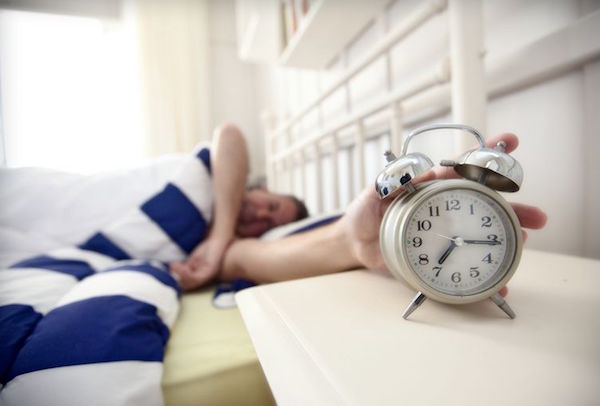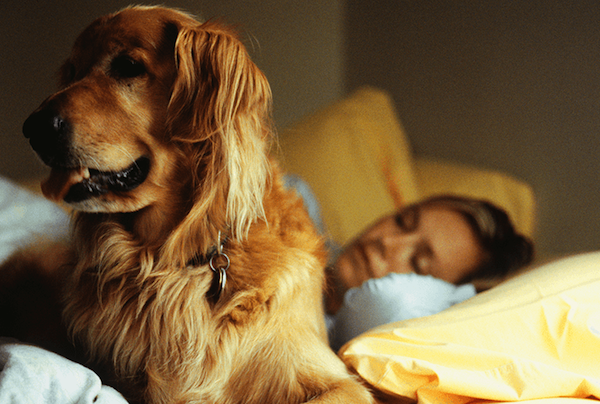A common problem people experience is getting to sleep, which can then harm the overall quality of sleep which can leave you feeling tired in the morning.
There could be many reasons that contribute to your poor sleep, but there are several simple changes that you can make to your immediate sleeping environment that will help you to improve the quality of your sleep
1. Move the Clock Away
There’s no issue with using a clock alarm; in fact, we recommend this over using your phone because this provides fewer distractions allowing you to get to sleep quicker.
However, once you’ve set the time on your alarm clock, you should place it away from you in another part of the room or turn it around so you can’t see the time.

How often have you been trying to get to sleep and you look at the time and calculate how many hours sleep you can get. The problem with this is that you end up worrying as time progresses, which makes it harder for you to get to sleep.
When you’re trying to get to sleep, the worst thing you can do is concentrate on the current time, because you need to relax. Seeing time pass without you falling asleep will do nothing but increase your frustration.
2. Remove Clutter
If you’ve been living in the same home or apartment, your room can quickly become not only your bedroom but also an office, gym or playroom for your children. To be able to associate your bedroom with sleep you need to clear out all the things that don’t correlate with rest.
You can put all these things into a different room, or you may even realise that it’s clutter that needs to be thrown out. If you regularly perform other activities in your room, then it can be hard for your brain to switch off and go to sleep.
For example, if you do school work in your bedroom then when its time to sleep you may start feeling anxious about whether you can meet a deadline because your brain is still associating your room with school work.
Cleaning out the clutter will also make your sleeping space more comfortable and less cramped.
3. Keep Your Room Dark
A dark sleeping environment helps your body fall asleep as this can play a role in signalling that it’s time to sleep. Even if there are small amounts of light present, this can keep you awake so when you’re ready to relax you need to keep the number of light emitting sources to a minimum.
It means you need to turn off electronics such as televisions and monitors because even when your eyes are completely closed the light can still affect your sleep.
It extends to light from the environment outside such as cars driving by. To block external light sources you can either install blackout curtains or sleep with a black sleeping mask.
It can be hard, but you need to turn it over or put it on aeroplane mode because when you receive notifications or phone calls, this will light up even if you have it on silent.
4. Do Not Share a Room With Pets
It can be difficult to sleep without your pet if you’re already used to them sleeping in your bed. But if you’re serious about improving your sleep, then it’s time to retrain your pets to sleep by themselves in another room.
It may take a while because animals form habits very quickly but having them in your bed can disturb your sleep and wake you up limiting the amount of REM sleep you get.

Pets that sleep in your bed can also shed hair which can lead to allergic reactions without you even realising. Even mild effects of allergic reactions such as sneezing can wake you out of your deeper sleep stages.
Not having your pet in the bed also gives you a cleaner sleeping space which makes the area, so you drift off to sleep much quicker.
5. Get a Comfortable Bed
You can make all the changes you like to your sleeping environment, but if your sleep surface is uncomfortable, then you’ll struggle to sleep. A vital sign that your mattress isn’t right is if you wake up feeling numb, stiff or tired then you may need to replace it.
The average mattress is designed to last for 8-10 years, but this isn’t always the case, so if it has begun to sag or you can feel the springs digging into your back then this can severely affect the quality of sleep that you get each night.
You have to remember that you spend at least a third of your life sleeping on your bed so you need to ensure that you’re resting on the best surface that you can afford. The type of mattress that you need will depend on your personal preferences including your weight and the position that you sleep in.
6. Have an Ideal Temperature
When you go to sleep, you need to make sure that you’re as comfortable as possible and this extends to body temperature where being too cold or hot can disturb your sleep. Having your sleep disturbed doesn’t have to mean that you wake up fully, but it can wake you out of your deeper sleep, so you still wake up feeling groggy.
Your ideal temperature will vary from person to person, so this may mean that you need to open the window or use a fan to keep you cool. Whereas if you feel too cold, then you can turn the heating up or use a room heater to keep the room at your desired temperature.
If you share a bed with another person, then you may need to compromise or use other products. For example, if you have the window open but they’re too cold then they can use an electric blanket.
7. Have a Quiet Environment
Noise can be a common disturbance when you’re attempting to sleep. Sound can come from many sources including your room, the rest of your home or even from outside. This noise can stop you from falling asleep or even worse, wake you up.
If you regularly can hear a noise that you can’t control, then you can use a white noise machine which produces soothing sounds that not only help you to relax but also drown out other noises.
A cheaper alternative is to use earplugs which, depending on the volume of the noise, can completely block out external sound.
8. Remove Electronics
Electronics are known for decreasing the amount of restful sleep that we get, and this can range from televisions to mobile phones and tablets. These electronic devices emit light which can limit that amount of sleep that you get each night.
The blue light emitted can delay the release of sleep hormones including melatonin which send signals to the body that it’s time to sleep. This delay can make it harder to fall asleep leaving you tossing and turning in bed.
When you’ve chosen a time to go to sleep, you need to turn all these devices off for good, so you can concentrate on relaxing to fall asleep. Although the standby lights on electronics are tiny, they can still be disturbing especially if you have multiple in the same room. To completely remove these, you may need to switch them off from the mains.
9. Clean Air
Air quality has a direct effect on the quality of sleep that we can get, and poor quality air can also lead to more severe issues such as sleep apnoea if not treated. Indoor air can often be more polluted than outdoor air which poses a more significant risk because we spend numerous hours each night indoors sleeping breathing this same air in and out.
One way to limit the effect is by using an air purifier which allows the air in the room to enter the device, and it has inbuilt filters that remove impurities such as allergens and mould.
10. Keep Your Bedroom For Two Things
Your bedroom should only be for sleeping and sex and nothing else because it should be a place for relaxation and not stress. It also makes your brain associate your bedroom with sleep which will set off triggers when it’s time to sleep meaning that you’ll find it easier to fall asleep.
If you’re used to doing many other activities in your room other than these two, then it may take some discipline to stick to it, but ultimately it will lead to higher quality sleep.
If you’re having trouble sleeping, then making the above changes can entirely solve your sleeping issues. If you’re still struggling to sleep, then you may have a more serious underlying, so it’s recommended that you visit your GP or a sleep specialist for a consultation to get an accurate diagnosis.
